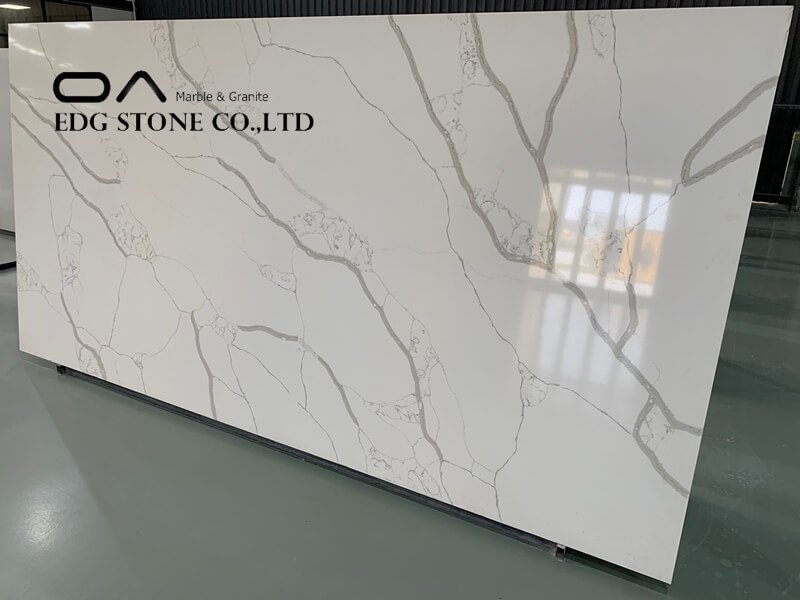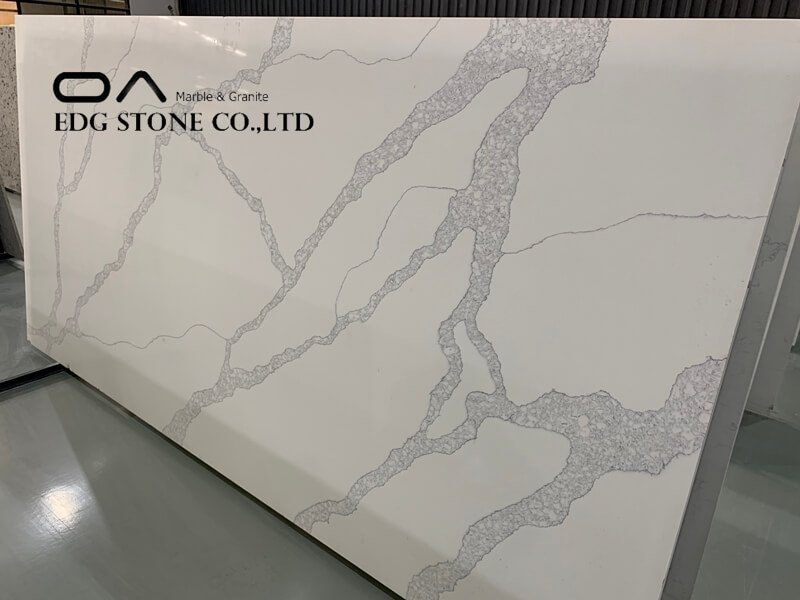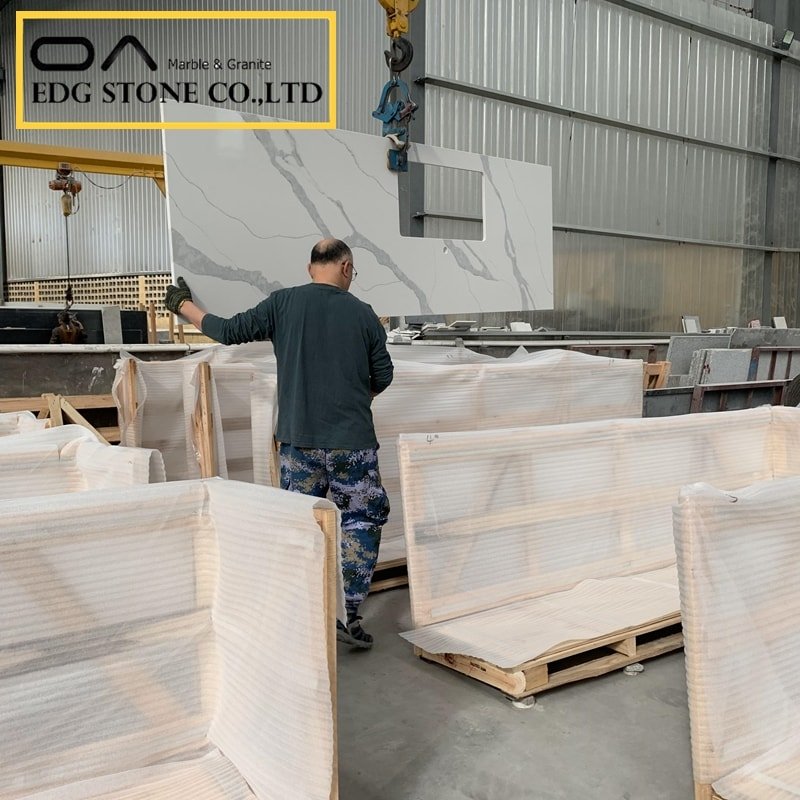Most of the quartz slabs currently sold on the market have the problem of color difference. Chromatic aberration is a big problem that plagues various manufacturers. How to solve it and what are the reasons for the chromatic aberration?
It needs to start from the production process. At present, most of the process flow of quartz slate is:
Quartz sand and powder ingredients (according to the formula) → mixing → cloth → pressing → curing → thickness setting → polishing → forming
According to the above process, the causes of chromatic aberration are:
1. For products with the same batch of raw materials, the instability of raw materials is one of the main reasons for the color difference. The main manifestation is that the same batch of raw materials is not the same because of the different ore-producing areas. Therefore, mineral processing is very important and must be checked before ore processing. The ore must be stable if the unqualified things are removed. In addition, the stone powder must not be rusty after the resin test, otherwise, the iron content will exceed the standard. The second is the added white glass mirror glass, the quality of the current market is very unstable, the color is different, and it is easy to produce chromatic aberration.
2. Resin mixing and pigment addition. The amount of pigment determines the length of the stirring time, and it cannot be the same. The incorrect weighing and unclean addition of the pigment during the weighing and adding process are also the main reasons for the color difference.
3. The acid value of the resin.
4. Improper operation during mixing.
In view of the above problems, the solution is:
1. Strictly control the procurement of raw materials, no matter what kind of raw materials, the first batch should be checked in addition to its basic conditions (impurities, whiteness, weight, particle size), and the samples should be sealed and preserved. When the second batch of raw materials of the same specifications and models are put into the warehouse, they should be compared, and it should be recorded whether there is a difference in whiteness, particle size, etc., etc. For products with the same number, use the same batch of raw materials as much as possible. If you can’t press the small plate and compare it with the large plate first, you can only operate it when you adjust the approximation. It is best to mix the quartz powder uniformly before using it.
2. The weighing of the color material must be carried out at the same time with two people present. Before weighing the material, it must be checked first to reduce the error as much as possible. If possible, it can be operated after grinding with a three-roll grinder and then pour it into the resin bucket. When mixing, you must first store the air, lower the position, and pour as close to the resin as possible to prevent the toner from splashing. When mixing the resin, increase or decrease the mixing time according to the amount of color. Once the mixing time is fixed, the same batch number can not be arbitrarily Change.
3. For the acid value of the resin, use products from the same manufacturer and the same model as much as possible to avoid different manufacturers, which may cause a certain deviation and affect the gloss of the board.
4. The color difference is caused by the improper operation of the mixer during mixing. **Stir the aggregate, add the resin and stir evenly, stop and clean the surrounding shaft of the mixing shaft with a shovel and clean the materials on the mixing block, then stir again, add Do not pour the powder on the mixing shaft when adding powder. Pay attention to the residue on the surrounding wall of the mixer when mixing, so that each pot is even and consistent.
In short, there are many reasons for the color difference of the quartz stone plate, which requires the manager to find the cause of the color difference in the actual operation, in order to prevent the color difference and to achieve the same length as possible to facilitate the stability of the product quality.









